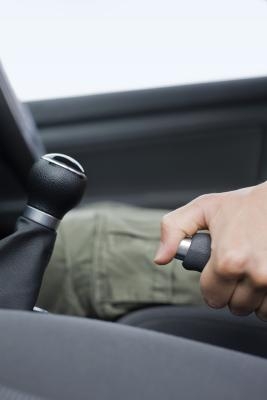
The emergency brake (often referred to as the parking brake) controls the rear brakes through a series of steel cables that are connected to either a hand lever or foot pedal. The emergency brake can manually stop the vehicle, even if there is total brake failure from the hydraulic system, which normally is responsible for stopping the car.
On vehicles with manual transmission, the emergency brake needs to be used to prevent the car from rolling when parked. However, on vehicles with automatic transmission, placing the car in the "Park" position serves the purpose of keeping the car stopped. This causes many people to not use their emergency brake, as it is viewed as unnecessarily redundant.
However, if the emergency brake is rarely used, a number of problems may occur.
Not using the emergency brake can cause the cables connecting the rear brakes to the emergency brake to become rusted and corroded. If not repaired, the driver will not be able to brake in emergency situations, and/or to keep his parked car from rolling down a steep hill.
Again, this occurs when brake cables freeze up and become rusted due to lack of use. When the emergency brake doesn't release, this can cause excessive drag, and the car will stop too quickly if the driver tries to coast while in neutral.
On several car models, brake systems self-adjust when the emergency brake is used. Accordingly, if the emergency brake is never used, the brakes never have a chance to self-adjust, which may force the driver to step further and further down on the brake pedal for it to engage.
On many vehicles, brake cables on the left and right sides of the car are attached together to a lever linkage called an equalizer yoke. The equalizer yoke is connected to a single cable that runs to the emergency brake lever or pedal, and balances the amount of force that is applied to both cables when the emergency brake is applied.
If one cable freezes up, only one wheel will lock. While this should not create a problem when the emergency brake is used for parking, it could create a serious brake imbalance should emergency braking be needed to stop the vehicle. The imbalance would likely cause one wheel to lock up and skid, which would send the vehicle into a spin.